#Abbie Farwell Brown
Explore tagged Tumblr posts
Photo

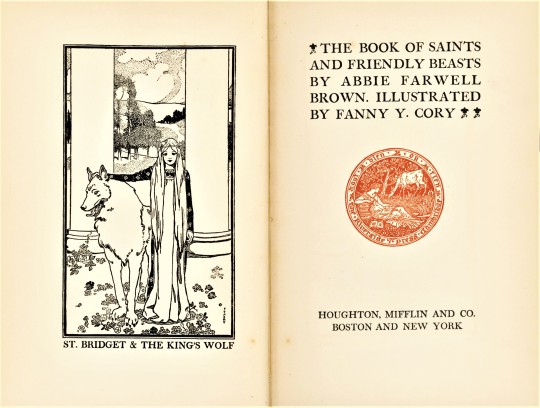

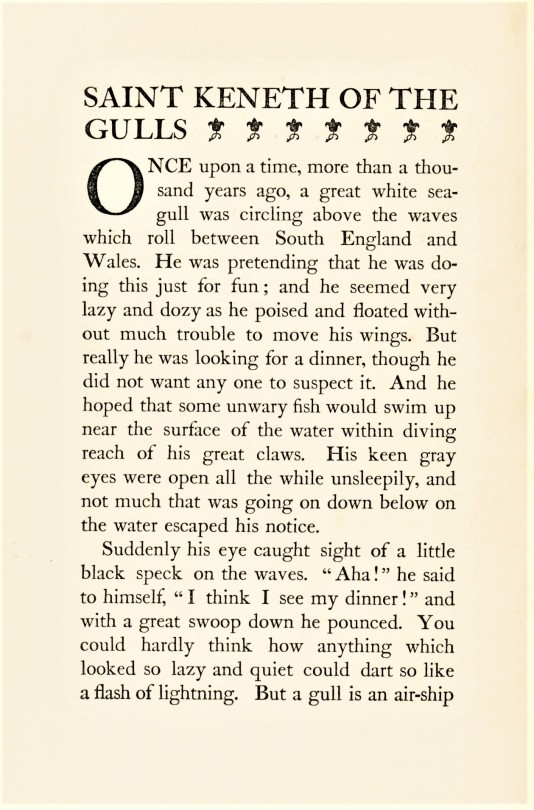
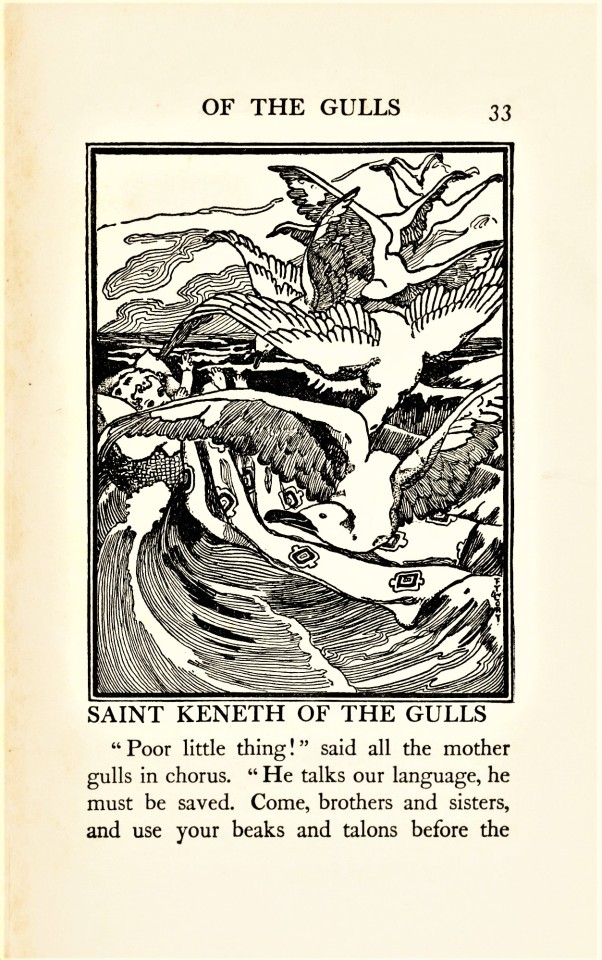

More Folktales
With Women’s History Month coming to a close, I offer you one final book that caught my eye first by the lovely gold accented cover, followed by the stories and illustrations inside.
The Book of Saints & Friendly Beasts was written by American author Abbie Farwell Brown (1871-1927) and illustrated by Fanny Young Cory (1877-1972). It was first published in Boston and New York by Houghton, Mifflin, & Co. in 1900, printed at the Riverside Press and designed by the incomparable Bruce Rogers. The book contains twenty-two stories that focus on a different saint and animal in each tale as well as illustrations that coincide with a handful of the tales.
The Book of Saints & Friendly Beasts was actually Brown’s first published book and was intended for a younger audience. She was inspired to write the book after her trip to Chester Cathedral in England in 1899. The animals that coincide with the tales were inspired by the moral tenets of Christianity, which I found to be quite interesting. This book and its initial publication was what led to her career as a children’s book author.
Fanny Young Cory’s desire to draw began at a young age, where she drew on anything that she could. She made her first sale in 1898 to The Century Magazine, and once her career blossomed, she did covers and interior illustrations for various other magazines. Her most enduring effort, however, and one she considered to be her finest work, was a project she started as a means of relaxation and came to be known as The Fairy Alphabet.
View more posts from our Historical Curriculum Collection of children’s books.
View more Women’s History Month posts.
-- Elizabeth V., Special Collections Undergraduate Writing Intern
#Women's History Month#folktales#women writers#women illustrators#Abbie Farwell Brown#Fanny Young Cory#the book of saints & friendly beasts#children's books#Houghton Mifflin#Riverside Press#bruce rogers#Elizabeth V.
131 notes
·
View notes
Text
How Odin lost his eye
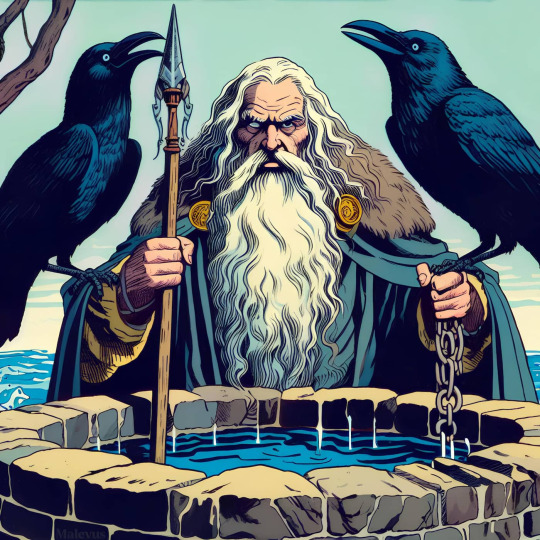
Art by Malevus
I found a book from 1906 that was a collection of already existing stories from other already published books. These stories were collected by Hamilton Wright Mabie in his book Myths Every Child should know. He wrote many books like this, for both adults and children. A collection of stories he felt everyone should be aware of. Pomes, Shakespeare, Fairytales, Culture; even Publishing a book about Japan in 1914, 2 years before his death.
I think he was fascinated by stories of old, as well as how it can shape cultures of today. While he didn't write these stories himself, he clearly wanted more people to know about these stories. So I thought I'd share one while I think many know, I still think it's important to share. This story can originally be found in In the days of Giants by Abbie Farwell Brown, 1902.
How Odin lost his eye
In the beginning of things, before there was any world or sun, moon, and stars, there were the giants; for these were the oldest creatures that ever breathed. They lived in Jotunheim, the land of frost and darkness, and their hearts were evil. Next came the gods, the good Æsir, who made earth and sky and sea, and who dwelt in Asgard, above the heavens. Then were created the queer little dwarfs, who lived underground in the caverns of the mountains, working at their mines of metal and precious stones. Last of all, the gods made men to dwell in Midgard, the good world that we know, between which and the glorious home of the Æsir stretched Bifröst, the bridge of rainbows.
In those days, folk say, there was a mighty ash tree named Yggdrasil, so vast that its branches shaded the whole earth and stretched up into heaven where the Æsir dwelt, while its roots sank far down below the lowest depth. In the branches of the big ash tree lived a queer family of creatures. First, there was a great eagle, who was wiser than any bird that ever lived—except the two ravens, Thought and Memory, who sat upon Father Odin's shoulders and told him the secrets which they learned in their flight over the wide world. Near the great eagle perched a hawk, and four antlered deer browsed among the buds of Yggdrasil. At the foot of the tree coiled a huge serpent, who was always gnawing hungrily at its roots, with a whole colony of little snakes to keep him company—so many that they could never be counted. The eagle at the top of the tree and the serpent at its foot were enemies, always saying hard things of each other. Between the two skipped up and down a little squirrel, a tale bearer and a gossip, who repeated each unkind remark and, like the malicious neighbour that he was, kept their quarrel ever fresh and green.
In one place at the roots of Yggdrasil was a fair fountain called the Urdar-well, where the three Norn maidens, who knew the past, present, and future, dwelt with their pets, the two white swans. This was magic water in the fountain, which the Norns sprinkled every day upon the giant tree to keep it green—water so sacred that everything which entered it became white as the film of an eggshell. Close beside this sacred well the Æsir had their council hall, to which they galloped every morning over the rainbow bridge.
But Father Odin, the king of all the Æsir, knew of another fountain more wonderful still; the two ravens whom he sent forth to bring him news had told him. This also was below the roots of Yggdrasil, in the spot where the sky and ocean met. Here for centuries and centuries the giant Mimer had sat keeping guard over his hidden well, in the bottom of which lay such a treasure of wisdom as was to be found nowhere else in the world. Every morning Mimer dipped his glittering horn Giöll into the fountain and drew out a draught of the wondrous water, which he drank to make him wise. Every day he grew wiser and wiser; and as this had been going on ever since the beginning of things, you can scarcely imagine how wise Mimer was.
Now it did not seem right to Father Odin that a giant should have all this wisdom to himself; for the giants were the enemies of the Æsir, and the wisdom which they had been hoarding for ages before the gods were made was generally used for evil purposes. Moreover, Odin longed and longed to become the wisest being in the world. So he resolved to win a draught from Mimer's well, if in any way that could be done.
One night, when the sun had set behind the mountains of Midgard, Odin put on his broad-brimmed hat and his striped cloak, and taking his famous staff in his hand, trudged down the long bridge to where it ended by Mimer's secret grotto.
"Good-day, Mimer," said Odin, entering; "I have come for a drink from your well."
The giant was sitting with his knees drawn up to his chin, his long white beard falling over his folded arms, and his head nodding; for Mimer was very old, and he often fell asleep while watching over his precious spring. He woke with a frown at Odin's words. "You want a drink from my well, do you?" he growled. "Hey! I let no one drink from my well."
"Nevertheless, you must let me have a draught from your glittering horn," insisted Odin, "and I will pay you for it."
"Oho, you will pay me for it, will you?" echoed Mimer, eyeing his visitor keenly. For now that he was wide awake, his wisdom taught him that this was no ordinary stranger. "What will you pay for a drink from my well, and why do you wish it so much?"
"I can see with my eyes all that goes on in heaven and upon earth," said Odin, "but I cannot see into the depths of ocean. I lack the hidden wisdom of the deep—the wit that lies at the bottom of your fountain. My ravens tell me many secrets; but I would know all. And as for payment, ask what you will, and I will pledge anything in return for the draught of wisdom."
Then Mimer's keen glance grew keener. "You are Odin, of the race of gods," he cried. "We giants are centuries older than you, and our wisdom which we have treasured during these ages, when we were the only creatures in all space, is a precious thing. If I grant you a draught from my well, you will become as one of us, a wise and dangerous enemy. It is a goodly price, Odin, which I shall demand for a boon so great."
Now Odin was growing impatient for the sparkling water. "Ask your price," he frowned. "I have promised that I will pay."
"What say you, then, to leaving one of those far-seeing eyes of yours at the bottom of my well?" asked Mimer, hoping that he would refuse the bargain. "This is the only payment I will take."
Odin hesitated. It was indeed a heavy price, and one that he could ill afford, for he was proud of his noble beauty. But he glanced at the magic fountain bubbling mysteriously in the shadow, and he knew that he must have the draught.
"Give me the glittering horn," he answered. "I pledge you my eye for a draught to the brim."
Very unwillingly Mimer filled the horn from the fountain of wisdom and handed it to Odin. "Drink, then," he said; "drink and grow wise. This hour is the beginning of trouble between your race and mine." And wise Mimer foretold the truth.
Odin thought merely of the wisdom which was to be his. He seized the horn eagerly, and emptied it without delay. From that moment he became wiser than anyone else in the world except Mimer himself.
Now he had the price to pay, which was not so pleasant. When he went away from the grotto, he left at the bottom of the dark pool one of his fiery eyes, which twinkled and winked up through the magic depths like the reflection of a star. This is how Odin lost his eye, and why from that day he was careful to pull his gray hat low over his face when he wanted to pass unnoticed. For by this oddity folk could easily recognise the wise lord of Asgard.
In the bright morning, when the sun rose over the mountains of Midgard, old Mimer drank from his bubbly well a draught of the wise water that flowed over Odin's pledge. Doing so, from his underground grotto he saw all that befell in heaven and on earth. So that he also was wiser by the bargain. Mimer seemed to have secured rather the best of it; for he lost nothing that he could not spare, while Odin lost what no man can well part with—one of the good windows wherethrough his heart looks out upon the world. But there was a sequel to these doings which made the balance swing down in Odin's favour.
Not long after this, the Æsir quarrelled with the Vanir, wild enemies of theirs, and there was a terrible battle. But in the end the two sides made peace; and to prove that they meant never to quarrel again, they exchanged hostages. The Vanir gave to the Æsir old Niörd the rich, the lord of the sea and the ocean wind, with his two children, Frey and Freia. This was indeed a gracious gift; for Freia was the most beautiful maid in the world, and her twin brother was almost as fair. To the Vanir in return Father Odin gave his own brother Hœnir. And with Hœnir he sent Mimer the wise, whom he took from his lonely well.
Now the Vanir made Hœnir their chief, thinking that he must be very wise because he was the brother of great Odin, who had lately become famous for his wisdom. They did not know the secret of Mimer's well, how the hoary old giant was far more wise than anyone who had not quaffed of the magic water. It is true that in the assemblies of the Vanir Hœnir gave excellent counsel. But this was because Mimer whispered in Hœnir's ear all the wisdom that he uttered. Witless Hœnir was quite helpless without his aid, and did not know what to do or say. Whenever Mimer was absent he would look nervous and frightened, and if folk questioned him he always answered:
"Yes, ah yes! Now go and consult someone else."
Of course the Vanir soon grew very angry at such silly answers from their chief, and presently they began to suspect the truth. "Odin has deceived us," they said. "He has sent us his foolish brother with a witch to tell him what to say. Ha! We will show him that we understand the trick." So they cut off poor old Mimer's head and sent it to Odin as a present.
The tales do not say what Odin thought of the gift. Perhaps he was glad that now there was no one in the whole world who could be called so wise as himself. Perhaps he was sorry for the danger into which he had thrust a poor old giant who had never done him any wrong, except to be a giant of the race which the Æsir hated. Perhaps he was a little ashamed of the trick which he had played the Vanir. Odin's new wisdom showed him how to prepare Mimer's head with herbs and charms, so that it stood up by itself quite naturally and seemed not dead. Thenceforth Odin kept it near him, and learned from it many useful secrets which it had not forgotten.
So in the end Odin fared better than the unhappy Mimer, whose worst fault was that he knew more than most folk. That is a dangerous fault, as others have found; though it is not one for which many of us need fear being punished.
#Odin#norse mythology#Norse Gods#Food and Folklore#Folktale#norwegian folktale#folklore#Mythology#witch#heathen#pagan#fairytale#giant#January
5 notes
·
View notes
Note
hiii ^^
hope you're doing well <3
How good to lie a little while
And look up through the tree!
The Sky is like a kind big smile
Bent sweetly over me.
The Sunshine flickers through the lace
Of leaves above my head,
And kisses me upon the face
Like Mother, before bed.
The Wind comes stealing o'er the grass
To whisper pretty things;
And though I cannot see him pass,
I feel his careful wings.
So many gentle Friends are near
Whom one can scarcely see,
A child should never feel a fear,
Wherever he may be.
(friends by abbie farwell brown)
- swan💙
hi love!
Lambs that learn to walk in snow
When their bleating clouds the air
Meet a vast unwelcome, know
Nothing but a sunless glare.
Newly stumbling to and fro
All they find, outside the fold,
Is a wretched width of cold.
As they wait beside the ewe,
Her fleeces wetly caked, there lies
Hidden round them, waiting too,
Earth's immeasureable surprise.
They could not grasp it if they knew,
What so soon will wake and grow
Utterly unlike the snow.
(first sight by philip larkin)
0 notes
Text
Because I sang in April With magic in the air, Must I be sad and silent now When winter boughs are bare?
My heart is not a songster That waits upon the spring, But while there is a blessed sky And friendly earth, I sing!
For evergreen my joy is, Like any cedar tree; It makes a tune of ice and snow And whispers it to me.
Winter Song by Abbie Farwell Brown
1 note
·
View note
Text

FRESH POSIES by Abbie Farwell Brown (Boston/New York: Houghton Mifflin, 1908) Illustrated by Anna Milo Upjohn.
Rhymes to read and pieces to speak.




source
#beautiful books#book blog#books books books#book cover#books#illustrated book#vintage books#children’s book#poetry#edwardian books
4 notes
·
View notes
Photo


from the book The Flower Princess ~ 1904 ~ written by Abbie Farwell Brown, illustrated by Margaret Ely Webb
(i added a bit of contrast in the mermaid image from the original to make out more detail)
11 notes
·
View notes
Text


A grandfather’s gift inscription to his granddaughter (1914) in a copy of Their City Christmas by Abbie Farwell Brown (1912)
(x)
1 note
·
View note
Text
“A witchery of sound”- ‘ceol sidhe’ or fairy music
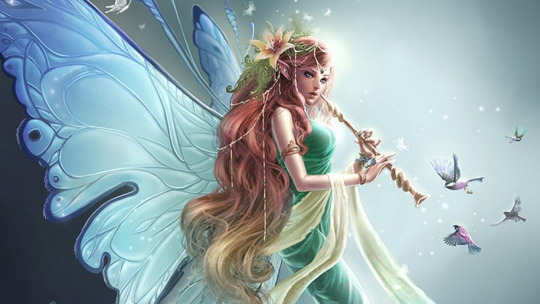
‘Flute fairy’ by
Svetlana Chezhina
“There’s many feet on the moor to-night, and they fall so light as they turn and pass, So light and true that they shake no dew from the featherfew and the hungry grass. I drank no sup and I broke no crumb of their food, but dumb at their feast sat I; For their dancing feet and their piping sweet, now I sit and greet till I’m like to die.
Oh kind, kind folk, to the words you spoke I shut my ears and I would not hear! And now all day what my own kin say falls sad and strange on my careless ear; For I’m listening, listening, all day long to a fairy song that is blown to me, Over the broom and the canna’s bloom, and I know the doom of the Ceol-Sidhe.
I take no care now for bee or bird, for a voice I’ve heard that is sweeter yet. My wheel stands idle: at death or bridal apart I stand and my prayers forget. When Ulick speaks of my wild-rose cheeks and his kind love seeks out my heart that’s cold, I take no care though he speaks me fair for the new love casts out the love that’s cold.
I take no care for the blessed prayer, for my mother’s hand or my mother’s call. There ever rings in my ear and sings, a voice more dear and more sweet than all. Cold, cold’s my breast, and broke’s my rest, and oh it’s blest to be dead I’d be, Held safe and fast from the fairy blast, and deaf at last to the Ceol-Sidhe!”
This poem, ‘The fairy music’ by Nora Chesson Hopper, captures the enchantment and other worldliness that it is associated with fairy music. Previously I have discussed the fairies’ liking for music and song and what seems to be the generally pleasure-seeking nature of their existence (see my earlier posting on fairy pastimes as well as chapter 11 of my British fairies). According to John Dunbar of Invereen, one of folklorist Walter Evans-Wentz’ Highland informants, the fairies were “awful for music, and used to be heard often playing the bagpipes.” (The fairy faith in Celtic countries, p.95)
Fairy musical skill
What I would like to do now in this posting is to discuss the actual nature and sound of that fairy music, based upon the first hand testimonies of those who have claimed to have been fortunate enough to have heard it. Nonetheless, there are a number of themes associated with fairy music which we may quickly recap:
the music is often heard coming from particular knolls, hills or barrows, in which the fairies are taken to reside. This is a very common local story and it can be found from the Fairy Knowe on Skye to the ‘music barrows’ of southern England, for example at Bincombe Down and Culliford Tree in Dorset and Wick Moor, near Stogursey in Somerset.
fairy musical skills and even instruments can be granted to fortunate humans. There are several sets of bagpipes in Scotland alleged to be fairy gifts. Fairy musical ability could be a blessing that made a man and his heirs rich (Evans- Wentz p.103). It could also be a curse, too: the favoured one might die young, being taken back by the fairies to play for them (Evans-Wentz p.40).
conversely, talented human musicians were from time to time abducted to satisfy the powerful fairy need for music and dance. Almost always they met the fate of all who tarry in Faery. They believed that they had played for just a night, but find all transformed on their return home.
fairy music can have magical or enchanting power- for example, from Ireland come stories of those who, on hearing it, felt compelled to dance- and then had to continue until they dropped from sheer exhaustion (Evans-Wentz p.69). Coleridge in his poem The eolian harp described “Such a soft floating witchery of sound/ As twilight Elfins make;” deliberately or not, a spell seemed to be cast upon the listening human; and,
occasionally, humans are able to commit a fairy tune to memory and contribute it to the mortal repertoire. One such is Be nort da deks o’ Voe from Shetland. Two Welsh examples are Cân y tylwyth teg and Ffarwel Ned Pugh (see Wirt Sikes, British goblins c.7 and also Evans Wentz Fairy faith pp.118 & 131- two examples from Man).
The last two points are of particular significance into an enquiry into what fairy music actually sounds like. Most of our older sources are not very helpful on this. In his history of Aberystruth parish, the Reverend Edmund Jones in 1779 is typical of the vague descriptions normally found: “everyone said [the music] was low and pleasant, but none could ever learn the tune.” Gathering evidence for his book The fairy faith in Celtic countries, Evans-Wentz was told that fairy music consisted of tunes not of this world, unlike anything a mortal man ever heard (pp.124 & 24), being the finest, grandest and most beautiful kind (pp.32, 47 & 57). Evans-Wentz was informed that it often continued over an extended period- an hour or even a whole night.

‘A little night music’ by
David Delamare
The sound of fairy music
Evidently the otherworldly nature of the music gave witnesses problems when they later tried to describe their experiences. The testimony of those of a more artistic temperament might therefore prove more enlightening. Poet and mystic George Russell (AE) told Evans-Wentz that he first listened to the music in the air on a hillside in County Sligo. He heard “what seemed to be the sound of bells, and was trying to understand these aerial clashings in which wind seemed to break upon wind in an ever-changing musical silvery sound.” (p.61) This leads us much closer to the reality and, in fact, the best account comes from a close friend of Russell and his wife, the visionary writer Ella Young. Over the summer of 1917 and into 1918 she repeatedly heard the ceol sidhe, which in her opinion surpassed human symphonies. Interestingly the very same description was used on the Isle of Man in the 1720s (Simon Young and Ceri Houlbrook, Magical folk, 2018, p.173).
The fairy music was, Young said, “orchestral and of amazing richness and complexity.” The melodies could be exquisite, sometimes like very fast reels, at others slow and wistful. On August 27th 1917 she described “a certain monotony like slow moving waves with a running melody on the crests.” Interwoven with this might be voices singing in an unknown tongue, either solo or resembling Gregorian chant. Young noted “delicate and intricate rhythms” in a variety of tempos, including “music of stricken anvils.” She heard a “myriad, myriad instruments” among which she mentioned cymbals, bells (both silvery tinkling and deep tolling), trumpets, harps, violins, drums, pipes, organs and bagpipes. Several times, though, she could not compare the sound to anything she knew from earthly ensembles; she heard “very high notes- higher than any human instrument could produce,” “something like a Jew’s harp” and “a curious reedy instrument.” Again, Young was not alone in this: George Waldron recorded that on Man in the 1720s islanders would hear “Musick, as could proceed from no earthly instruments” (Magical folk, p.173).
Despite her eloquence and sensitivity, Young struggled to give a clear account; it was “not music I can describe… it is beyond words.” Moreover, she found it “difficult to recall this music and the sensation it creates.” Nevertheless, she wrote (in terms similar to Russell’s) that the orchestral sound resembled a “wave or gush of wind” and that its effect was to create “a sense of freedom and exultation.”
Young harboured some doubts over her aural visions. She wrote on September 9th 1917 that “my head has been for several days quite normal,” but then she heard the sounds again and concluded “I think the singing in my head was really astral.” In other words, its origin was aethereal and unearthly. She believed that all could hear the same if only they drew closer to nature and had a peaceful and patient heart.
It is difficult to know quite what to make of this. Young herself admitted concerns over her own sanity, but at the same time W. B. Yeats and both AE and his wife heard the same “faery chimes” and “solemn undertone” of song. Furthermore, as noted earlier, these experiences could last for hours; this lessens the likelihood that they can be dismissed as temporary auditory delusions. Either these witnesses all hallucinated together or these highly detailed and circumstantial experiences record some actual sensations. The consensus, at least amongst poets, was certainly to confirm that pipes and, particularly, bells were characteristic of fairy music (see for example Ceol sidhe by Francis Ledwidge or Fairy ring by Abbie Farwell Brown).
https://britishfairies.wordpress.com/2018/02/11/a-witchery-of-sound-ceol-sidhe-or-fairy-music/
0 notes
Text
Abbie Farwell Brown, Heart of New England, 1920
FAIRY RING.
I stepped within the fairy ring, Where it was green, so green. Then I heard the trill of a fairy bell, And the song of the Fairy Queen.
The secret that she murmured me To the trill of the fairy bell, Was sweet, so sweet you’d not believe, If I should try to tell.
But step you too in the fairy ring, And hold fast to my hand; Then we may hear a lovelier thing, And both will understand.
0 notes
Link
Poems and Christian stories of the animal encounters of various saints. - Summary by Wikipedia via Libricox
0 notes
Text
The wood grew very quiet
As the road made a sudden turn;
Then a wavering, furtive path crept out
From the tangled briar and fern.
"Where does it lead?" I asked the child;
She shivered and shook her head.
"It doesn't lead to any place,
It is running away!" she said.
"It is running away on tiptoe
Through the untrodden grass,
To join the cheerful highroad,
Where real, live people pass.
"It runs from a heap of ruins
Where a home stood in old days;
But nothing living goes there now,
And — Nothing Living stays!"
The Frightened Path by Abbie Farwell Brown
1 note
·
View note
Text

IN THE DAYS OF GIANTS: A Book of Norse Tales by Abbie Farwell Brown (Boston, New York: Houghton Mifflin, 1902) Illustrations by E. Boyd Smith.
see book for more illustrations






#beautiful books#books books books#book blog#books#book cover#illustrated book#edwardian books#children’s book#vintage books#giant#norse mythology
4 notes
·
View notes
Photo

Source : Tucker Hudson Studios
The Fisherman The fisherman goes out at dawn When every one's abed, And from the bottom of the sea Draws up his daily bread.
His life is strange ; half on the shore And half upon the sea -- Not quite a fish, and yet not quite The same as you and me.
The fisherman has curious eyes ; They make you feel so queer, As if they had seen many things Of wonder and of fear.
They're like the sea on foggy days, -- Not gray, nor yet quite blue ; They 're like the wondrous tales he tells Not quite -- yet maybe -- true.
He knows so much of boats and tides, Of winds and clouds and sky ! But when I tell of city things, He sniffs and shuts one eye ! By Abbie Farwell Brown
0 notes
Text
Classical Book Review: The Icelandic Sagas: Tales of Kings and Heroes (Folio)
Classical Book Review: The Icelandic Sagas: Tales of Kings and Heroes (Folio)
By Joshua Philipp Abbie Farwell Brown described the far north in his 1902 book, “In The Days of Giants,” as “the land of the midnight sun, where summer is green and pleasant, but winter is a terrible time of cold and gloom; where rocky mountains tower like huge giants, over whose heads the thunder rolls and crashes, and under whose feet are mines of precious metals.” It’s a land that holds…
View On WordPress
0 notes
